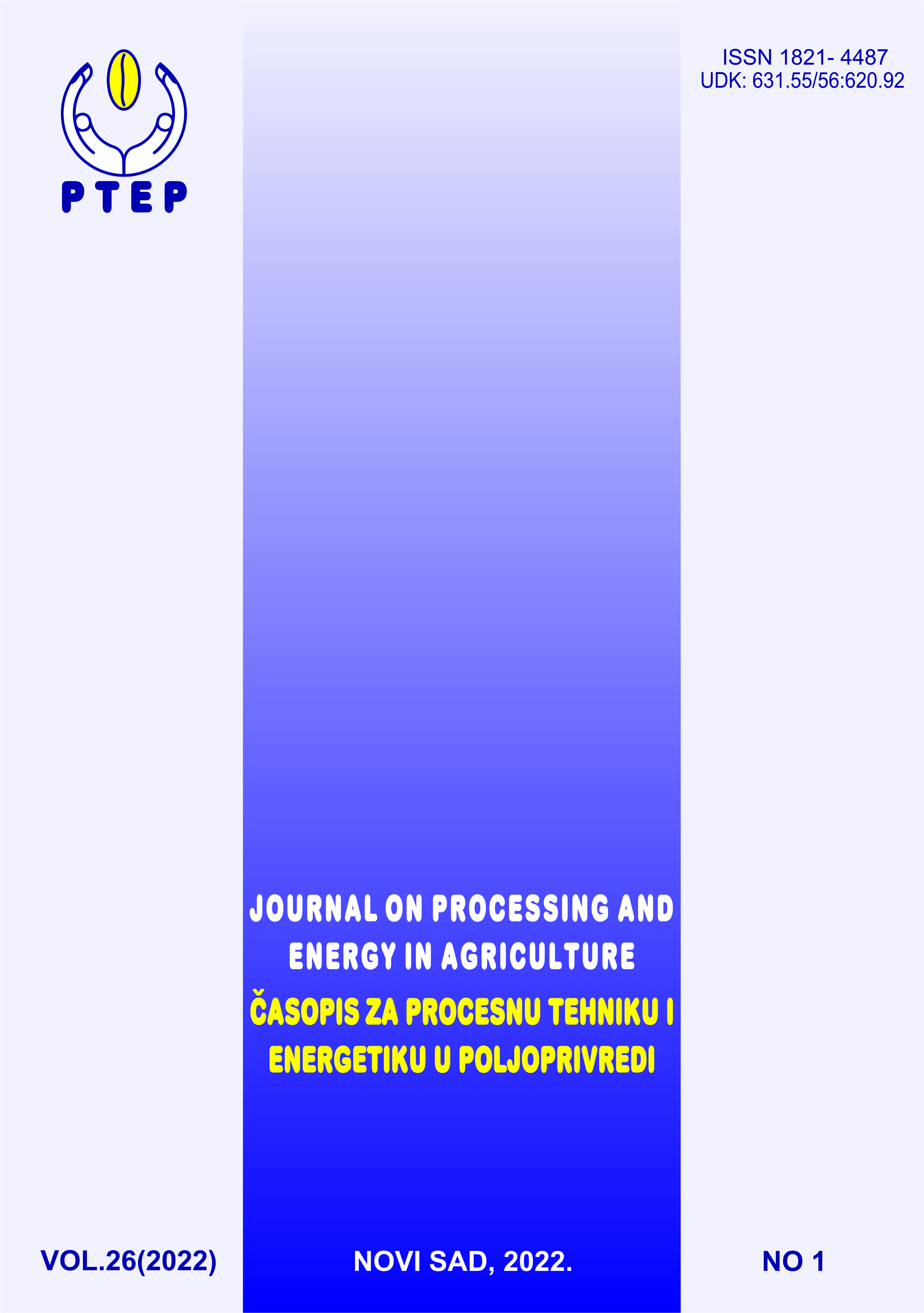INFLUENCE OF SEED PRE-TREATMENT AND TEMPERATURES DURING GERMINATION OF FOUR SEED LOTS OF FESTULOLIUM
Abstract
A species called Festulolium was created in the middle of the last century by crossing two genuses: Lolium and Festuca. This was followed by a period of research on Festulolium from the aspect of genetics and breeding, seed production, cultivation, technology and use. We conducted various pre-treatment impact studies on Festulolium seeds: i) cooling at 5-7 oC for 3 days, ii) application of KNO3 on seed germination medium, and the third pre-treatment was control, without pre-treatment (iii). After pre-treatment (i, ii, iii), seed germination have examined at the following temperature regimes (provided by the seed quality regulations): 20 oC (dark); alternately 20oC/ 30oC (light /dark); and 30 oC (dark). The tests were performed on four seed lots of the variety Peron, in four replicates. The germination temperature of 30 oC reduced germination and increased dead seed and abnormal germination in all pre-treatments. The variant without the application of pre-treatment had a significantly lower overall germination in the assessment of Festulolium seed quality. Seed lots showed a high influence on the Festulolium seed quality.
References
Abdelhalim M., Rognli O.A., Hofgaard I.S., Østrem L., Tronsmo A.M. (2016). Snow mould resistance under controlled conditions and winter survival in the field in populations of perennial ryegrass, meadow fescue and Festulolium are partly dependent on ploidy level and degree of northern adaptation. Canadian Journal of Plant Science, 96, 579–589.
Akgun I., Tosun M., Sengul S. (2008). Comparison of agronomic characters of Festulolium, Festuca pratensis Huds. and Lolium multiflorum Lam. genotypes under high elevation conditions in Turkey. Bangladesh Journal of Botany, 37, 1– 6.
Bewley J.D., Bradford K.J., Hilhorst H.W.M., Nonogaki H. (2013). Seeds: physiology of development, germination and dormancy. New York: Springer.
Butler,J.T., Celen E.A, Webb L.S., Krstic Đ., Sinterrante M.S. (2017). Germination in Cool-Season Forage Grasses under a Range of Temperatures. Crop Science 57:1725–1731
Deleuran L.C., Gislum R., Boelt B. (2010). Effect of seed rate and row spacing in seed production of Festulolium. Acta Agriculturae Scandinavica, Section B - Soil & Plant Science 60, 152–156
Finch-Savage E.W., Bassel E.G (2016). Seed vigour and crop establishment: extending performance beyond adaptation, Journal of Experimental Botany, 67, 3, 567–591
Hodgkin T., Hegarty T.W. (1978). Genetically determined variation in seed germination and field emergence of Brassica oleracea. Annals of Appled Biology, 88, 407–413.
Humphreys M.W., Farrell M.S,. Detheridge A,. Scullion S.J., Kingston-Smith A., O’Donovan A.S. (2013). Resilient and multifunctional grasslands for agriculture and environmental service during a time of climate change. Proceedings of the17th Symposium of European Grassland Federation, Akureyri, Iceland, 24–26 June, 335–337.
Humphreys MW; O’Donovan SA; Farrell MS; Gay AP; Kingston-Smith A.H. (2014). The potential of novel Festulolium (2n = 4x = 28) hybrids as productive, nutrient use efficient fodder for ruminants. Food and Energy Security, 3, 98–110
ISTA Rules (2021). International Seed Testing Association. Zurich. Switzerland
Milivojević M., Ripka Z., Petrović T. (2018). ISTA Rules Changes in Seed Germination Testing at the Beginning of the 21st Century. Journal on Processing and Energy in Agriculture, 22, 1, 40-45
Østrem L., Volden B., Larsen A. (2013). Morphology, dry matter yield and phenological characters at different maturity stages of ×Festulolium compared with other grass species. Acta Agriculturae Scandinavica, Section B - Soil and Plant Science 63, 531–542.
Perry DA. (1980). The concept of seed vigour and its relevance to seed production techniques. In: Hebblethwaite PD, ed. Seed production. London: Butterworths, 585–591.
Službeni list SFRJ br.47-87. Pravilnik o kvalitetu semena poljoprivrednog bilja (1987). (Official gazette SFRJ, No. 47/87. Rule on the quality of seeds of agricultural plants. 1987)
Stanisavljević R., Milenković J., Đokić D., Terzić D., Beković D., Poštić D., Štrbanović R. (2016). Influence of storing seeds on seed vigor and seedling meadow and tall fescue after five years. Journal on Processing and Energy in Agriculture, 20, 111-113.
Stanisavljević R., Poštić D., Milenković J., Đokić D., Beković D., Štrbanović R., Jovanović S., Tabaković, M (2019). Effect of seed aging on the seed quality and seedling growth of timothy grass (Phleum pratense L.). Journal on Processing and Energy in Agriculture, 23(1),10-13.
Stanisavljević R., Poštić D., Štrbanović R., Tabaković M., Jovanović S., Milenković J., Đokić D.Terzić D. (2020). Effect of seed storage on seed germination and seedling quality of Festulolium in comparison with related forage grasses. Tropical Grasslands-Forrajes Tropicales, 8(2), 125–132
Vieira R.D., TeKrony M., Egli B., Rucker M. (2001). Electrical conductivity of soybean seeds after storage in several environments. Seed Science and Technology, 29: 599-608.
Vivanco P., Oliveira J.A., Martín I. (2021). Optimal germination conditions for monitoring seed viability in wild populations of fescues. Spanish Journal of Agricultural Research, 19, 3, e0804. https://doi.org/10.5424/sjar/2021193-18025
Vujaković M., Jovičić, Ispitivanje kvaliteta semena 208-262 u Milošević M., Kobiljski B. (2011): Semenarstvo, Institut za ratarstvo i povrtarstvo, Novi Sad I deo.
Zhou D.W., McGill C.R., Irving L.J., Kemp P.D. (2013). A modified thermal time model to predict germination rate of ryegrass and tall fescue at constant temperatures. Crop Science, 53, 240–249.

